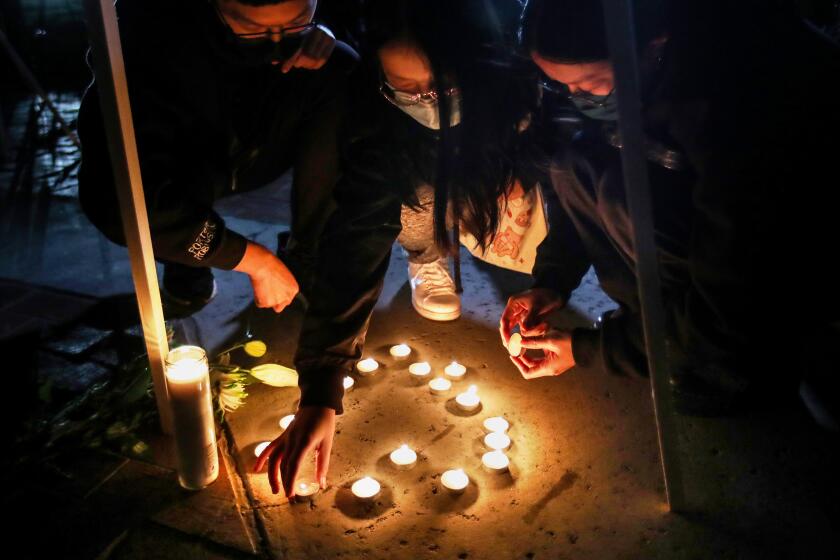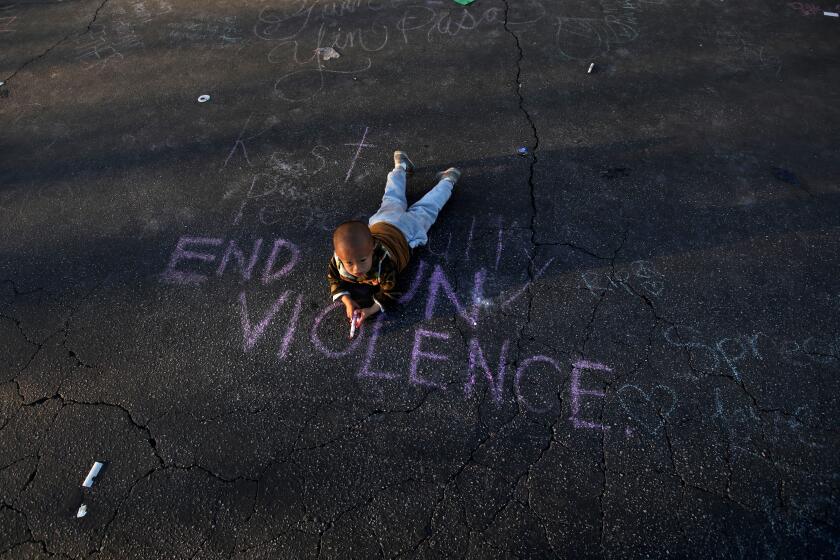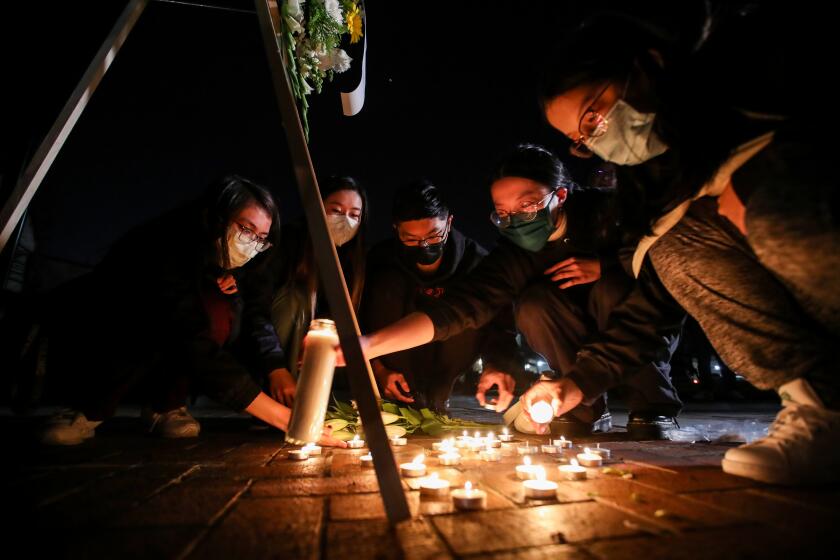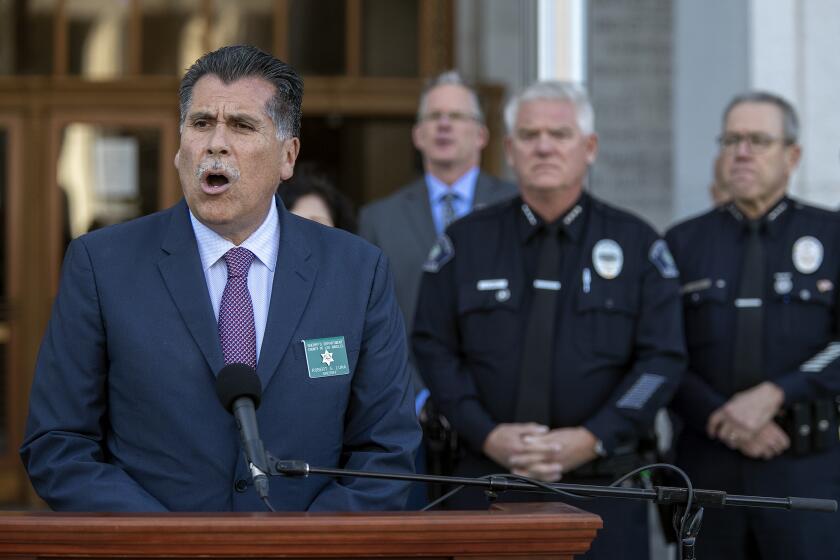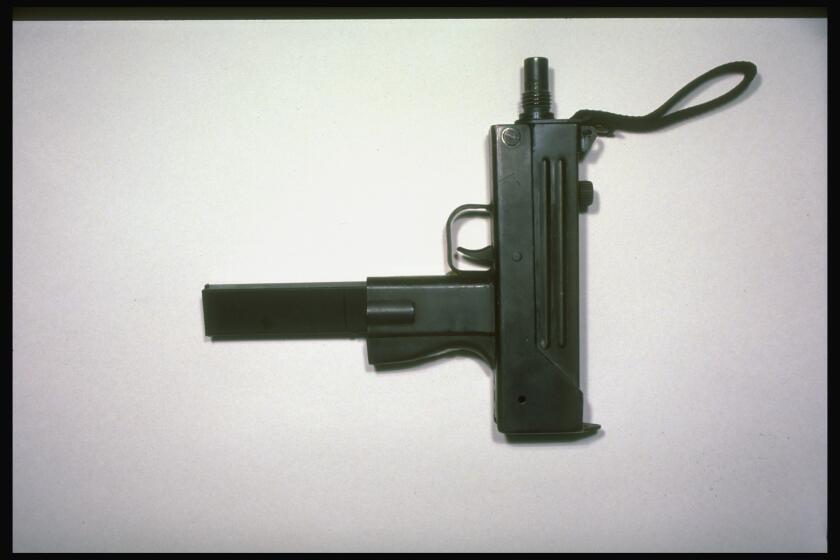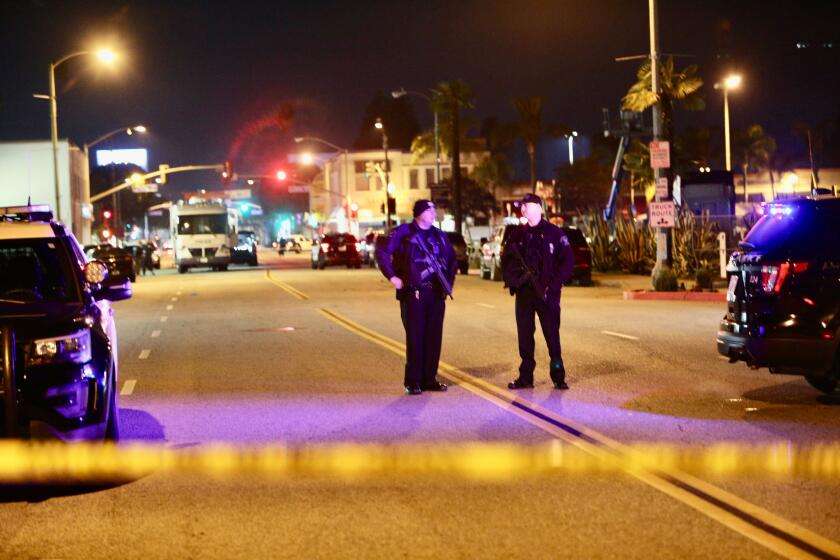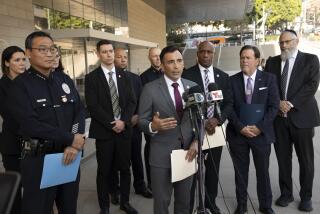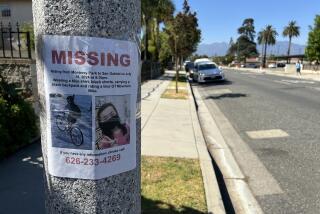In death, Monterey Park shooter’s motive remains a mystery; cops can’t connect to victims

- Share via
In the four days since 72-year-old Huu Can Tran opened fire at a Monterey Park dance studio, fragments of his life and possible motives for the attack have slowly emerged.
He at one time frequented the ballroom dance scene but appeared to have personal grievances against some in that world. He lived a somewhat isolated life. A law enforcement source confirmed to The Times that Tran was a gun enthusiast who purchased the semiautomatic MAC-10 assault weapon used in the attack in 1999.
But a clear sense of why he killed 11 people in Monterey Park before launching another attack at a dance hall in Alhambra that was thwarted remains a mystery.
And that mystery only seemed to grow Wednesday night with a hastily called news conference by L.A. County Sheriff Robert Luna, who said no one has yet recalled Tran visiting the two dance halls anytime during the last five years or having a personal link to any of the victims.
“As of today, based on interviews, they have not been able to establish a connection between the suspect and any of the victims,” Luna said.
Asian Americans across the country are anguishing over the recent mass shootings, in which older Asian men have allegedly opened fire on other Asians.
The investigation is in the early stages, and it could take weeks or longer to understand the full picture of what went wrong. The probe is also complicated by Tran’s death. Roughly 12 hours after he was disarmed in the lobby of Lai Lai Ballroom & Studio and escaped, authorities say he fatally shot himself inside his van in Torrance as officers closed in on him.
“The problem is once the suspect is dead, it is literally conjecture on what their motive was,” said Billy Hayes, a retired captain who oversaw the Los Angeles Police Department’s Robbery Homicide Division. “It is like you are trying to piece together the pieces of a puzzle and you’ve got one crucial piece that’s missing — the suspect.”
A gunman opened fire at a dance studio in Monterey Park, killing 11 people and wounding 9 more. Tens of thousands had gathered earlier nearby for a Lunar New Year festival.
Experts say investigators are likely looking for clues through computers and cellphones they seized from Tran’s home along with information through interviews with people who knew him. Detectives have not yet uncovered any writings that revealed the shooter’s motive, Luna said.
Monterey Park police recovered a motorcycle registered to Tran roughly one block from the crime scene, suggesting that he might have been leaving himself a backup vehicle if his van was not available, Luna said Wednesday night.
“We’re assuming it was an additional getaway vehicle [to use] if he needed to,” the sheriff said. “Why else would he put it there?”
Tran shot 42 times in a “spraying motion” inside the dance studio and left behind a 30-round magazine, Luna said.

Luna also specified that the gun Tran used in the attack, generically known as a MAC-10, was a Cobray M11-9 assault pistol that was purchased in Monterey Park in February 1999 and not registered in the state of California. A Norinco 7.62x25-millimeter pistol was used in his suicide, Luna said. Police also recovered a Savage Arms .308 bolt-action rifle from Tran’s Hemet home.
Investigators are continuing to comb through electronics, paperwork and other items recovered from Tran’s home.
“We’re looking at everything, every which way but loose, and again, with the goal of trying to find a motive,” Luna said. “And hopefully we can. Sometimes it’s frustrating when something like this happens. It’s so tragic, because we’re trying to understand it. And it doesn’t make sense. It really doesn’t.”
Det. Sal LaBarbera, a former LAPD South Bureau homicide supervisor, said, “The why is always the question the family desperately needs answered along with the public via the news media.”
Investigators continued to puzzle over what pushed Huu Can Tran to carry out a mass shooting at a Monterey Park dance studio, focusing on the possibility he was driven by jealousy.
But LaBarbera, who retired from the department in 2015, said motives can be hard to determine when a suspect is dead and hasn’t left a paper trail or electronic footprint detailing their thoughts.
Even when a case isn’t going to be prosecuted, determining what led someone to violence can become a personal mission for investigators too.
“Even though it may have not been able to be used in court, I needed it, I wanted to understand why,” LaBarbera said of his time working cases. “The investigators want to learn from each case ... if there’s a way they can nip this in the bud from future cases, and it’s something that can be shared, and taught throughout other agencies and the public.”
There’s a possibility the public may never learn why Tran carried out the killings.
Suicides tend to occur in clusters that suggest contagion, but there is little evidence that murders or mass shootings follow the same pattern, experts say.
Authorities also are probably trying to gather enough evidence to prove Tran was actually the gunman and there were no co-conspirators. Motive isn’t required, but it’s something investigators want to find if they can, Orange County Sheriff’s Department homicide Sgt. Jack Ackerman said.
“I believe it’s human nature in some ways to want to know why something happened or why somebody acted in a certain way,” Ackerman said. “Unfortunately, in a lot of cases, we’re not really ever able to give a satisfactory answer to make someone feel at peace with what happened or to have closure.”
After the Las Vegas mass shooting in 2017, investigators spent more than a year combing through evidence before closing the case without finding a clear motive. The shooting, which killed 58 people who were attending the Route 91 Festival, remains the deadliest mass shooting in modern U.S. history.
According to an FBI report on that case, there was “no single or clear motivating factor” that drove the gunman’s rampage. But that’s not unusual, the report said.
“Active shooters rarely have a singular motive or reason for engaging in a mass homicide,” the report said. “More often their motives are a complex merging of developmental issues, interpersonal relationships, clinical issues, and contextual stressors.”
Authorities are facing scrutiny over how long it took to notify the public that the gunman who killed 11 people was still at large.
In some mass shootings, the assailant offers a detailed, often demented, rationale.
David Wenwei Chou, the man charged with fatally shooting one person and injuring five at a Taiwanese church in Laguna Woods last year, left many clues about his motive.
He mailed seven volumes titled “Diary of an Independence-Destroying Angel” to a Chinese-language newspaper. He left notes in his car that indicated he did not believe Taiwan should be independent from China. Chou apparently had an issue with Taiwanese people because of the way he was treated while living in Taiwan, authorities said. He grew up in Taiwan as a waishengren — someone with recent roots in China.
Based on this evidence, prosecutors filed hate crime enhancements against him.
A closer look at the MAC-10, the semiautomatic gun that law enforcement say was used in a mass shooting over the weekend that killed 11 people at a Monterey Park dance studio.
People who knew Tran described him as a lonely, embittered man for whom dancing at Lai Lai and Star provided a moment of reprieve from an otherwise unhappy life. But even that wasn’t completely joyous.
A former friend of Tran, who was also his tenant for years, said he often complained about the instructors at the studios who he thought disliked him. It was a theory the man, who did not want to be named, said he thought was a “delusion.”
“He always complained that the instructors were not friendly to him, kind of like he was alienated and they just disliked him,” the man said. “That’s what he thought in his mind, and I saw no evidence at all of it.”
A law enforcement source with knowledge of the investigation told The Times that Tran likely snapped and decided to target those he felt hurt his well-being over the years. Investigators suspect he was having unspecified emotional problems that had recently been getting worse.
Two weeks before the shooting, Tran told police in Hemet that family members had tried to poison him many years earlier. He also claimed to have been the victim of fraud and theft. He promised to return with evidence but never did, according to police.
Tran was arrested in 1990 on suspicion of unlawful possession of a firearm, authorities said.
Authorities have said very little publicly about the shooter’s possible motives.
Eleven people are dead after a man opened fire in a dance studio in Monterey Park. Police believe the shooter also targeted an Alhambra studio. Here’s what we know.
Luna detailed his own questions during a news conference Monday: “Did he plan this the day of? Was it a week before? What drove a madman to do this? We don’t know, and we intend to find out,” he said. “We’re as curious as you are because this is disturbing.”
Ultimately, police may be able to venture a hypothesis about Tran’s motives, Hayes said, but there probably will never be certainty.
“I always thought solving cases was like putting together a puzzle. On the easy cases, you get all the outside pieces and then you start filling in stuff and you see a clearer picture,” Hayes said. “When you get pieces that are missing because of the suspect’s death, the puzzle is never finished.”
Times staff writer Noah Goldberg contributed to this report.
More to Read
Sign up for Essential California
The most important California stories and recommendations in your inbox every morning.
You may occasionally receive promotional content from the Los Angeles Times.
